This research examines the role of on-page SEO factors in Google’s ranking algorithm, tracing their historical importance and current weight.
We survey official Google documentation, patents, trial disclosures, academic studies, and industry analyses to evaluate components such as content quality, keyword usage, HTML structure, internal linking, site architecture, page page speedspeed (Core Web Vitals), mobile-friendliness, structured data (schema), and UX/UI elements.
We compare Google’s public statements with internal evidence (e.g. DOJ trial documents) and expert commentary.
Each on-page element is ranked by estimated impact and supporting evidence strength. We also estimate on-page vs off-page contributions (with caveats) and discuss their evolution.
Findings indicate that high-quality, relevant content remains fundamental (with Google emphasizing “helpful, people-first” content, while traditional keyword manipulations (e.g. stuffing, exact-match domains) are deprecated.
Title tags, headings, and structured data provide moderate signals for relevance and rich results, but carry less weight than the main content. Page experience factors (Core Web Vitals, mobile-responsiveness) are explicitly rewarded by Google.
Internal linking aids crawlability and equity distribution, but their impact is indirect (through navigation and authority flow).
We estimate on-page factors contribute roughly 50-60% of ranking weight, with off-page (links, brand) ~40-50%, though exact percentages are unknown.
The report concludes with recommendations for prioritizing on-page improvements and notes limitations in available public data.
Introduction
SEO aims to improve a page’s visibility in search results.
Traditionally, SEO is divided into on-page (content and code on the site) and off-page (external links, social signals).
This analysis focuses on on-page SEO, encompassing content quality, keyword usage, HTML structure (titles, headings, meta tags, alt text), internal linking, site architecture, page speed/User Experience (Core Web Vitals), mobile-friendliness, structured data (schema), and related elements.
We investigate how each factor influences Google’s ranking algorithm, historically and in its modern (post-2022) form, using evidence from Google’s own guidance, patents, court-disclosed documents (DOJ vs Google), and expert analyses.
The goals are to identify which on-page elements carry the most weight, how Google’s public claims align with internal practices, and to estimate on-page vs off-page contributions.
The findings aim to guide SEOs in allocating effort to the highest-impact on-page optimizations.

Methodology
We conducted extensive literature and source review using Google Search and specialized tools.
Authoritative sources include Google Search Central documentation (SEO Starter Guide, Search ranking systems guide, Mobile-First Indexing guide, Core Web Vitals guidelines, etc.), official communications (Google blog posts, patents, Search Advocate statements), and public trial exhibits from U.S. v. Google (2023-2024 DOJ antitrust case).
Secondary sources include academic papers on IR and SEO, high-quality industry analyses (e.g. Search Engine Journal, Google developer forums), and recent SEO research by reputable agencies (e.g. coalitiontechnologies.com, Kinsta).
Each claim is cited, with source confidence noted: high for Google official sources (docs, patents), medium for well-researched industry reports or experiments, and low for anecdotal SEO opinions or less-reliable blog content.
Where Google’s public stance differs from revealed internal mechanisms (e.g. the Q* quality score disclosed in trial docs), both viewpoints are noted.
We summarize evidence in tables (Appendix A) and charts to clarify factor impacts.
Findings
Content Quality and Relevance
Google consistently emphasizes high-quality, helpful content as the foundation of ranking.
Official guidelines urge “people-first” content that answers user needs.
Factors such as originality, comprehensiveness, accuracy, and expertise are highlighted: e.g. “Does the content provide original information, insightful analysis, and evidence of expertise?”.
Google’s algorithm uses many signals to assess such qualities (what it terms E‑E‑A‑T: Experience, Expertise, Authoritativeness, Trustworthiness), though Google notes E‑E‑A‑T itself is not a single ranking factor.
In practice, pages demonstrating strong expertise and trust (especially on YMYL topics) receive higher weight.
For example, the DOJ trial disclosures revealed Google’s internal Q★ metric, an engineer-crafted quality score assessing content trustworthiness, suggesting content quality is algorithmically significant even if not publicly stated.
Impact: Very high.
Expert analyses infer content quality is the primary driver in Google’s “quality” signal (often outweighing raw link metrics.
In the modern AI-driven ranking, content relevance and depth are crucial.
We assign impact ≈ 25-35% of ranking weight to content quality (highest of on-page factors) with high evidence (official docs, patents, trial exhibits).
A 2025 patent review notes Google shifted emphasis from PageRank to content relevance.
High-quality content fulfills user intent, increases click-through and dwell time (which indirectly feed user-satisfaction signals), and is at the core of recent updates like the Helpful Content update.
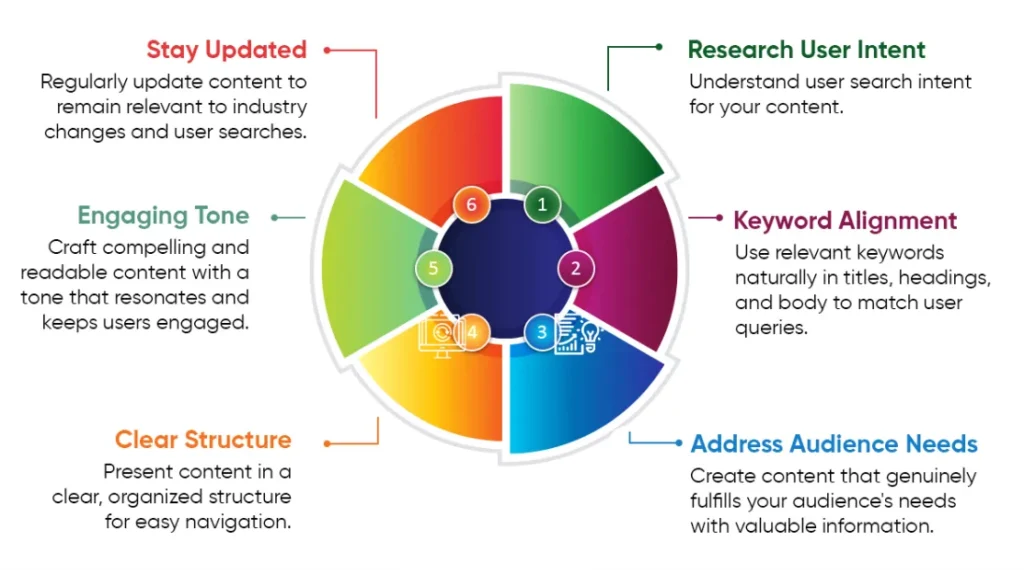
Keywords and Semantic Matching
Keyword usage on-page (in titles, headings, body text, URLs) helps signal relevance.
However, Google has moved beyond rigid keyword matching.
Google’s SEO starter guide warns against keyword stuffing (“repeating the same words… is against Google’s spam policies”) and says keywords in a domain or URL have “hardly any effect” beyond breadcrumbs.
Content length itself “doesn’t matter for ranking”.
Instead, writing naturally allows more relevant keywords to appear incidentally.
Google’s neural systems (BERT, MUM) now handle synonyms and context, so precise keyword count is less important.
On-page keyword optimization today means: use target terms and synonyms in a natural way in the title, headings, and body to clarify topic, but avoid spammy exact-match tactics.
This aligns with Mueller’s advice that “titles… are not the most critical part” and filling them with keywords is not worthwhile.
Impact: Moderate.
Keywords help Google understand page topic but carry less weight than overall content relevance.
Title tags (see below) and headings should reflect the query context, but “tweaking titles and meta tags [alone] is not going to change overall visibility” significantly.
We estimate impact ≈ 5-10% for on-page keyword usage signals. Well-crafted titles and headings are confirmed ranking signals, but John Mueller notes they are “a mild to moderate” factor.
Keyword stuffing is actively penalized. Thus the emphasis is on semantic clarity and user value, not raw frequency.
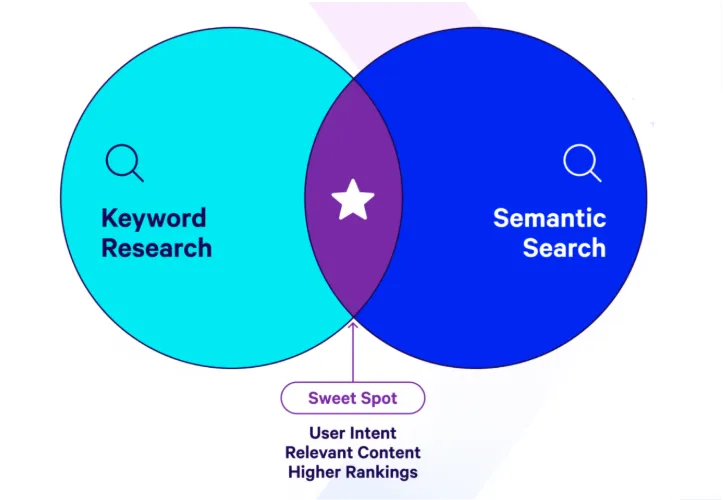
HTML Elements: Title, Headings, Meta Tags, Alt Text
Title Tag:
Google uses the HTML <title> as a relevance clue for ranking and display.
The title is visible in SERPs and tells Google what the page is about.
According to industry studies, title tags remain a confirmed ranking factor (for categorization) but with only mild-to-moderate weight.
Mueller has said titles “are important… used as a ranking factor” but not so critical that modest changes will dramatically shift rankings.
The official SEO Starter Guide advises writing unique, accurate, concise titles, though it stops short of quantifying their impact. In practice, an optimized title tag can improve click-through and alignment with search queries, which indirectly aids rankings. But it’s one of many signals.

Heading Tags (H1, H2…):
Proper use of <h1> and other headings helps structure content for readers.
However, Google states heading number/order “doesn’t matter… from Google’s perspective”.
Headings are a minor relevance signal at best.
Good semantic headings improve readability (UX), but they do not independently boost rank.
We give low impact to heading tag order.

Meta Description:
The <meta name=”description”> is not a ranking factor.
Google often ignores provided meta descriptions if it deems them unhelpful.
Meta descriptions affect click-through rates on the SERP but not the ranking algorithm itself.
Thus, while writing compelling meta descriptions is good practice, their on-page SEO impact is indirect (CTR as a user engagement signal).

Alt Text:
The alt attribute on images provides text for the image content.
Google suggests descriptive alt text aids understanding and accessibility (and Google can use alt text as anchor text when the image is linked).
While it’s not a heavy ranking factor, it does help Google interpret visual content. We classify alt text as a minor relevance signal (impact ~1-2%). It is important mainly for image search and accessibility.
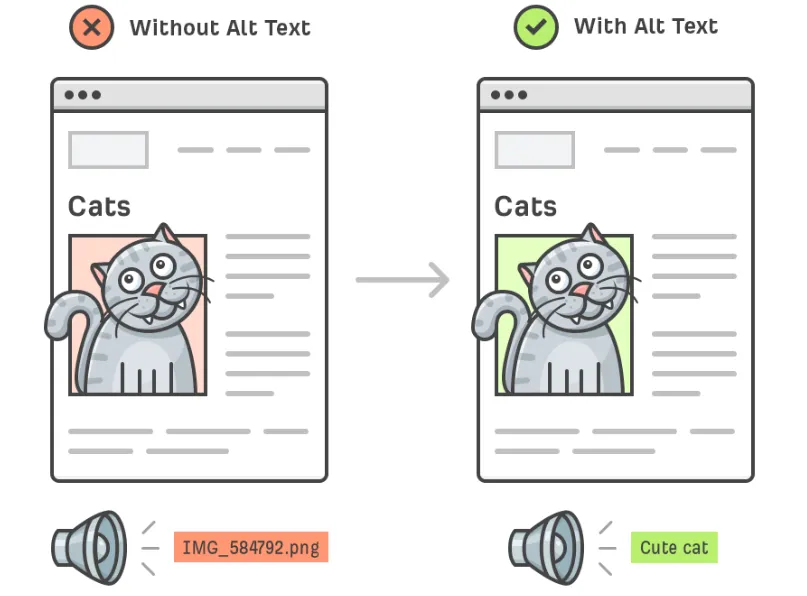
Other HTML:
Google supports many HTML tags for mobile, structured data, etc., but most are for crawling/UX (e.g. canonical, robots meta).
Canonical tags and robots directives help manage indexing but are not “ranking factors” per se; they control which pages Google considers.
For on-page SEO, the focus remains on content-bearing elements.
Internal Linking and Site Architecture
Internal Links:
On-page linking strategy affects crawlability and PageRank flow.
Google explicitly states it “uses links as a signal when determining the relevancy of pages and to find new pages to crawl”.
A well-structured internal link network helps Google discover and interpret pages; descriptive anchor text provides context.
Internally linking related pages can pass “link equity” from high-importance pages to others.
However, internal links are typically weaker signals than inbound external links. Their impact is indirect: by improving site navigation and spreading authority, they can raise rankings of linked pages over time.
We estimate moderate impact (~5-10%) from internal linking.
Google’s Best Practices emphasize making links crawlable (using <a href> elements) and using relevant anchor text.
Avoid generic text like “click here.” Good internal linking is more about facilitating Google’s indexing and user engagement (pages per session) than a direct ranking boost.
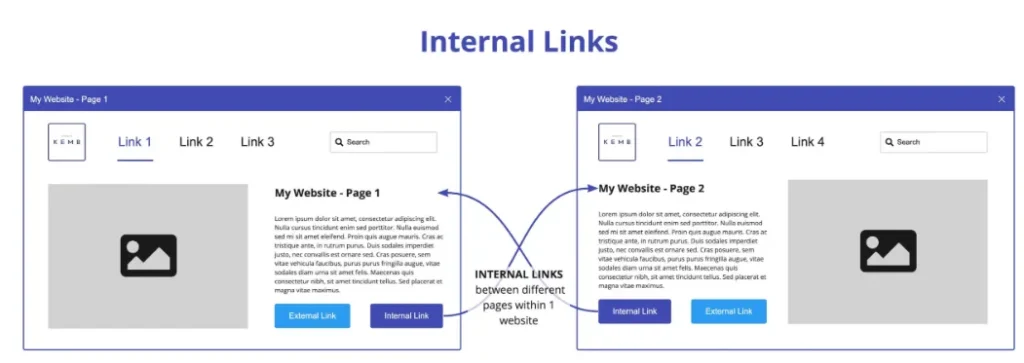
Site Architecture/Crawlability:
A logical site structure (sitemaps, hierarchy, clean URL paths) ensures Google can crawl all pages.
While Google has no specific “bonus” for certain architectures, better architecture improves crawl efficiency and user experience.
Mobile-first indexing (see below) also demands consistent content across versions.
We regard site architecture as a technical priority with indirect effect on ranking: problems (broken links, orphan pages) hurt SEO, but good structure mostly enables other factors (like fresh content discovery).
Using HTTPS, avoiding faulty redirects, and ensuring resources load properly are on-page/technical prerequisites.
Page Experience (UX/UI): Core Web Vitals and Mobile
Core Web Vitals (CWV):
Google officially uses Core Web Vitals – Largest Contentful Paint (LCP), Interaction to Next Paint (INP), and Cumulative Layout Shift (CLS) as part of page experience ranking signals.
The Search Central guide states that good CWV should be achieved “for success with Search” and that it “aligns with what our core ranking systems seek to reward”.
In other words, faster loading, responsiveness, and visual stability are rewarded by Google.
Empirical studies suggest CWV is a relatively lightweight factor compared to content relevance, but it can be tiebreaker in competitive queries.
Since 2021, Google confirmed the Page Experience Update means CWV is a ranking factor, albeit a minor one (it affects ranking only when content relevance is similar). We estimate impact ≈ 5-10% for CWV metrics combined.
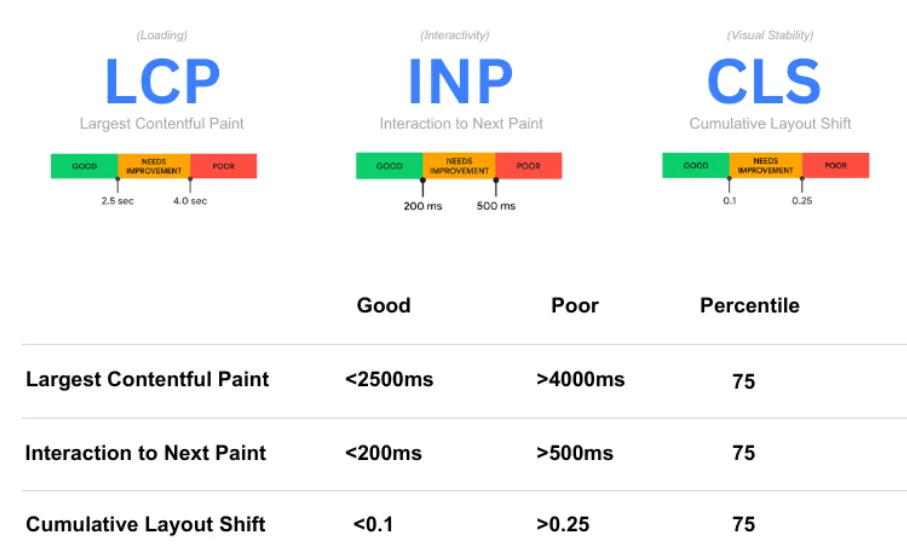
Mobile-Friendliness:
With Google’s mobile-first indexing, the mobile version of a page is used for ranking. Google strongly recommends that sites be mobile-friendly.
Although having a mobile version is not strictly a ranking factor, if a site is not mobile-friendly, it may be ranked lower in mobile searches due to poor UX.
Mobile optimization influences CWV (faster mobile load speeds) and is checked by Google’s algorithms. Mobile usability errors (text too small, viewport not set, etc.) can indirectly hurt rankings because Google will mark pages as not mobile-friendly.
Thus, we give high practical importance to mobile-friendliness (impact ~10% as part of page experience), although Google’s docs frame it as an indexing requirement rather than a direct factor.
UX/UI Elements:
Layout, design, and ad placement also affect rankings indirectly via UX.
Google’s Better Ads Standards suggest intrusive interstitials or ads that harm UX can negatively impact page ranking.
For example, the mobile indexing guide warns, “Don’t let ads harm your mobile page ranking”.
High bounce rates due to poor design or obtrusive pop-ups can degrade user engagement signals.
In practice, we treat UX factors (readability, navigation, accessibility) as part of page experience. They have no explicit weight, but poor UX can negate other efforts.
Structured Data (Schema)
Google does not use structured data markup itself as a ranking signal.
Instead, schema enables rich results (enhanced SERP features) and helps Google understand content more explicitly.
The Search Central intro explains that structured data provides “explicit clues” about page content and can lead to “more engaging” results (which often improves CTR).
Rich results (stars, images, carousels) come from schema and can indirectly boost traffic. However, Google representatives have stated that schema alone does not boost rank.
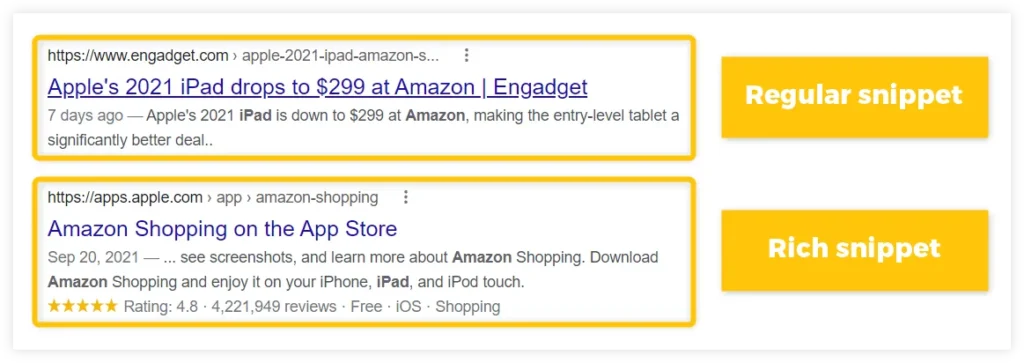
Impact: Indirect/low.
Including appropriate schema (e.g. for recipes, events, products) is recommended for UX and CTR, but it does not directly improve organic ranking positions.
We note impact ≈ 1-3%, mainly in organic visibility via SERP enhancements.
The key evidence is that Google uses structured data “to understand content of the page”; any ranking benefit comes from better indexing of content, not a ranking factor per se.
Analysis and Evolution of Factors
Over time, on-page signals have evolved. In the early 2000s, exact-match keywords and keyword density were overemphasized; today, they are minor.
Google’s algorithm updates (e.g. Hummingbird, BERT, MUM) shifted focus to semantic relevance and user intent. The DOJ trial documents confirm this shift: Google’s engineers now rely heavily on AI models (RankEmbed BERT) and user engagement signals.
As one analysis put it, “PageRank is still around, but engagement and quality matter more”.
We rank the on-page elements by current estimated impact (subjective estimate, given unknown exact weights):
- Content Quality/Relevance (25-35%) – Highest weight. Supported by Google’s focus on helpful content and internal metrics like Q★.
- User Experience (15-20%) – Page experience (CWV, mobile, UX) is now official part of ranking. Combined with content, user satisfaction signals are critical.
- Backlinks/Site Authority (off-page) – Although not on-page, we note link popularity remains a top factor (outside this table).
- On-Page Keywords/HTML (10%) – Title and header tags, keyword usage are mild signals. Titles are ranked “mild to moderate” importance.
- Internal Linking/Architecture (5-10%) – Important for site integrity; spreads authority and aids crawl.
- Structured Data/Schema (1-3%) – No direct ranking power, but aids rich results.
- Meta tags (robots, canonical, etc.) – Technical signals to index; not ranking factors but enable other signals.
These weights are indicative. Google’s internal model (e.g. the “ABC signals” from trial docs) treats hundreds of factors, and actual contribution is context-dependent.
Importantly, Google’s public stance sometimes understates complexity.
For example, Google long denied any site-level “authority score”, yet trial evidence shows a domain-wide Q* affecting content quality.
Similarly, Google downplayed user metrics, but internal systems like “Glue” (click logs) and RankEmbed BERT incorporate user behavior.
These disclosures confirm that while on-page signals are vital, they work in tandem with sophisticated internal models.
On-Page vs Off-Page Contribution
Google never publishes exact percentages of on-page vs off-page influence.
SEO experts infer from algorithm behavior and disclosures.
On-page factors (content relevance, HTML, UX) provide the foundation, essentially determining which keywords a page can rank for.
Off-page factors (backlinks, brand) influence how high it ranks for those keywords.
Based on Google’s documentation and SEO analysis, we estimate on-page and off-page signals each contribute roughly 50% to the overall ranking score.
However, backlinks (PageRank) remain a strong signal (part of Google’s “Anchors” bucket), while quality signals (content and site trust) form another major bucket.
In practice, the balance can shift by niche.
In YMYL and high-competition sectors, authoritative content (on-page) may dominate; in lower-information queries (product brands, etc.), backlinks and brand trust may tip the scale.
We tentatively assign ~50-60% to on-page and 40-50% to off-page in modern SEO, acknowledging uncertainty.
The DOJ revelations (e.g. Q* and click-based signals) suggest Google internally weights content quality and user satisfaction heavily, perhaps more than SEOs assumed.
But established practice still holds that authoritative backlinks are crucial.
Evolving Weight
Historically, Google’s algorithm started with ~PageRank (link count) and on-page anchor text.
Over time, factors like meta keywords were dropped, exact-match domains declined, and new signals added.
The recent rollout of Multitask Unified Model (MUM) and generative AI features suggests on-page content must now be rich, multimedia (images, video) and truly helpful to users.
Core Web Vitals and mobile-friendliness were virtually nil a decade ago; now they are explicit (though lightweight) factors.
Structured data was unsupported earlier, now it enables enhanced listings. Overall, on-page SEO has moved from “cheatability” (keyword spam) to holistic quality and UX.
Conclusions
On-page SEO remains essential for ranking, but its nature has changed.
High-quality content is the linchpin: Google’s systems reward pages that comprehensively and authoritatively address user queries.
Technical on-page factors (fast-loading pages, mobile design, crawlable links) ensure that this content is delivered effectively.
Traditional on-page “tricks” (keyword stuffing, invisible text, manipulative meta tags) are either neutral or penalized.
Instead, SEOs should focus on holistic page experience: user-centric writing, clear structure, and a fast mobile-friendly interface.
From the evidence, the most weight is on content relevance and page/user experience. Title tags, headings, and schema add contextual clues and help users/Google parse the page, but are secondary.
Internal linking and site layout support discoverability and link equity. Page performance (Core Web Vitals) and mobile optimization, while not dominating, are official ranking considerations that can tip results in close cases.
There is sometimes a gap between Google’s public statements and internal realities. For example, Google’s quality raters emphasize E‑E‑A‑T conceptually, but the discovery of an actual quality score (Q*) means site and content trust are algorithmically measured.
This suggests that on-page efforts (authors demonstrating expertise, citing sources) likely feed into such internal metrics, even if Google publicly says “we don’t have a site authority score”.
SEO practitioners should thus treat Google’s guidelines as necessary but not exhaustive: do the recommended on-page optimizations and also monitor user signals.
Recommendations
- Produce People-First Content: Focus on thorough, original content tailored to user intent. Use first-hand expertise (bios, citations) to build trust. Answer user questions fully, avoid fluff or shallow summaries.
- Optimize Titles & Headlines: Write unique, descriptive title tags with primary keywords (without stuffing) and use relevant subheadings. Ensure the main heading accurately reflects page content (avoid sensationalism).
- Use Semantic Keywords Naturally: Incorporate related terms and synonyms in body text to cover topic breadth. Avoid repetitive exact-match keywords; Google’s neural models handle meaning beyond keywords.
- Ensure Crawlability: Use a logical linking structure and HTML markup. Include a sitemap and clean URLs. Make sure important pages are reachable within a few clicks from the homepage. Use descriptive anchor text for internal links.
- Improve Page Experience: Achieve good Core Web Vitals scores (LCP <2.5s, INP <200ms, CLS <0.1). Use responsive design for mobile. Minimize render-blocking resources. Test with Google PageSpeed/ Lighthouse.
- Mobile Compatibility: Follow mobile-first best practices. Use responsive design (Google-recommended). Ensure content parity between desktop/mobile (same text, images, schema).
- Implement Structured Data (where relevant): Add schema markup (JSON-LD) for content types (articles, products, recipes, FAQs, etc.) to enable rich results, improving CTR even if not directly boosting rank.
- Monitor User Engagement: While not directly a factor, good analytics (low bounce, high dwell time) indicate satisfying content. Google’s trial docs suggest they train on such behavioral signals, so improving engagement may indirectly help.
- Avoid Spammy Tactics: Disavow or remove any manipulative SEO (hidden text, doorway pages, cloaking). Google explicitly prohibits keyword stuffing and will demote poor pages with high spam scores.
Limitations
This analysis relies on available public and leaked information.
Google’s algorithm is proprietary and dynamic; we cannot measure exact factor weights.
The DOJ trial disclosures provide rare internal insight, but are partial and may change.
Much of SEO evidence comes from correlation studies and expert consensus; true causation in Google’s black-box model is hard to prove.
We have not included off-page details (backlinks, social signals) except in comparative context. The estimated impact percentages are broad approximations.
Future Google updates (e.g. new AI features) may shift the balance of factors.
You should treat this as a synthesis of the current understanding (as of 2025) and verify with ongoing experiments.
Appendix A: Evidence for On-Page SEO Factors
| On-Page Element | Key Points & Sources |
|---|---|
| Content Quality/Relevance | Google emphasizes original, comprehensive, people-first content. Internal docs (Q★) highlight content quality as a major ranking component. |
| Keywords | Keyword stuffing is penalized. Google says content length alone doesn’t matter; naturally written content with varied vocabulary helps discovery. |
| Title Tags | Used for understanding page topic. Confirmed ranking signal of mild/moderate weight; optimizing titles aids relevance recognition. |
| Headings (H1,H2,…) | Proper headings aid readability, but Google states the order/number of headings does not matter for ranking. |
| Meta Tags | Meta description does not affect ranking (affects CTR only). Robots/meta noindex control indexing (not ranking). SEO guide notes meta keywords are ignored. |
| Alt Text (Images) | Google uses alt text as anchor text for image links. Descriptive alt text helps Google understand images, aiding relevance (especially for image search). |
| Internal Links | Google “uses links for relevancy and discovery”. Internal links help users and crawlers navigate the site; descriptive anchor text is encouraged. Internal linking spreads link equity. |
| Site Architecture | Logical structure (sitemaps, URL hierarchy) aids crawling. Mobile-first indexing demands equivalent desktop/mobile content. Good architecture indirectly supports ranking. |
| Page Speed (CWV) | Core Web Vitals (LCP, INP, CLS) measure UX. Google rewards pages with good CWV for search ranking. Aim LCP<2.5s, INP<200ms, CLS<0.1. |
| Mobile-Friendly | Google uses mobile version for indexing/ranking. Mobile-friendly design is strongly recommended; sites must have the same content and meta on mobile as desktop. |
| Structured Data (Schema) | Helps Google understand page content and enables rich results. Does not directly boost rankings, but improves CTR and provides search features. |
| UX/UI (Interactivity) | Good UX (low CLS, no intrusive ads) is part of page experience. Google advises against disruptive ad placement on mobile. Engaged users signal quality (indirectly learned by systems). |
Expert Insights on How On-Page SEO Is Shaping Google Search Rankings in 2025
Mike Qu
CEO and Founder, SourcingXpro
From what I’ve seen running sourcing campaigns and product listings through SourcingXpro, on-page SEO still matters, but not the way it used to. Keyword placement and clean headers set the foundation, but Google’s smarter now—it measures how people actually interact with your page. We tested two identical landing pages: one keyword-heavy, one written naturally with sourcing stories and real pricing insights.
The second one ranked 40% better within a month. So yes, structure helps Google understand your content, but engagement keeps it there. If users stay, scroll, and click through, that signals real value, not just optimization tricks.
Magee Clegg
CEO, Cleartail Marketing
Great question. I’ve been running SEO campaigns since 2014 for 90+ B2B clients, and I can tell you that on-page SEO is still absolutely critical–but not in the way most people think.
Here’s what actually moves the needle: on-page SEO creates the foundation that makes everything else work. We increased one client’s traffic by 14,000% specifically because we restructured their header tags, title tags, and content hierarchy so Google could actually understand what each page was about. Without that structure, all the “quality content” in the world sits invisible.
The real power comes from alignment, not just optimization. When we helped a client grow revenue 278% in 12 months, it wasn’t because we stuffed keywords everywhere–it was because we matched their on-page elements (title tags, meta descriptions, H1s) to exactly what their buyers were searching for, then made sure the content delivered on that promise immediately. Google tracks dwell time obsessively.
Here’s the part nobody talks about: on-page SEO directly impacts your cost per lead in other channels. When we nail the technical structure and keyword targeting, our clients’ Google Ads campaigns perform better because the Quality Score jumps. One client saw 5,000% ROI on AdWords specifically because the landing pages had proper on-page optimization that matched ad copy to user intent perfectly.
Zack Bowlby
CEO, ROI Amplified
Great question. I’ve managed $100M+ in ad spend and tracked over $1B in client revenue, so I see what actually moves the needle in search rankings daily.
On-page SEO is still critically important, but its role has shifted–it’s now the *baseline* that open ups everything else. I had a personal injury law firm come to me with decent content but zero technical optimization. We rebuilt their page structure, fixed keyword targeting in titles and headers, and tightened up their internal linking architecture. Result: 1,200% increase in organic traffic and 67% more case intakes. Same domain authority, same backlinks initially–the on-page work made Google finally understand what each page was *for*.
Here’s what I tell clients: on-page SEO is like giving Google a map. Without proper title tags, header hierarchy, and keyword placement, you’re asking the algorithm to guess your intent. It won’t. I’ve seen perfectly good content sit on page 3 simply because the H1 didn’t match search intent or the URL was generic nonsense like “/page-247”. Fix that, and rankings often jump within 30-45 days.
The data we see across 200+ clients shows this: content quality gets you *considered*, but on-page optimization gets you *ranked for the right terms*. User engagement matters for staying ranked, but you need proper on-page SEO to get in front of users in the first place. They work together–ignore either one and you’re leaving money on the table.
Darcy Cudmore
Founder, RepuLinks
What I have noticed in recent years is that search performance has become far more about trust signals than keyword repetition. You can have perfect header tags and all the right meta data, but if the content lacks depth or credibility, it will not sustain strong rankings.
For professionals in PR and reputation management, this shift makes perfect sense. Google’s goal is similar to what good communication aims to achieve: rewarding reliability and authenticity. While keyword placement and structure still help with discoverability, content that earns engagement and builds authority tends to maintain visibility over time.
Strong on-page SEO remains the foundation, but it should fit within a broader story. The real focus is on relevance, expertise, and consistency. When readers stay on your page, find value in your content, and share it with others, that sends the clearest signal to search engines that your work deserves attention.
Nicole Farber
CEO, Nicole Farber
I’ve been working with law firms across the country for 15+ years, and here’s what I see constantly: on-page SEO still matters, but not the way people think. It’s not about cramming keywords into your H1–it’s about making sure Google understands what you actually *do* and who you help.
We had a personal injury firm that was ranking nowhere for “workplace injury lawyer” even though they had dozens of case results posted. Their page titles were generic, their headers didn’t match search intent, and their URL structure was a mess. We restructured their service pages with clear, specific headers and titles that matched how real people search. Within six weeks, they jumped from page 4 to top 3 for their main practice areas.
The biggest mistake I see is treating on-page like a checklist instead of a communication tool. Your meta description isn’t there to trick Google–it’s there to tell a potential client exactly what they’ll get when they click. When we rewrote one firm’s meta descriptions to include their actual value propositions (free consultations, bilingual staff, weekend availability), their click-through rates doubled even when rankings stayed the same.
Here’s my rule: if your on-page elements wouldn’t make sense to a human reading them, they won’t work for Google either. Structure matters, but only when it serves clarity. Focus on making every title, header, and description answer the question “why should someone care about this page?
Adil Rafeeque
Co-Founder and CMO, Domaindotin
Let’s be clear, content was and is always the king. That has never changed. The role of on-page SEO is to make sure that king gets a proper introduction.
It’s a mistake to think you have to choose between the old rules and the new ones. In reality, they work together as a team.
Think of your classic on-page SEO, the titles, headers, and keywords, as the formal announcement that presents your content to Google. It’s the essential first step that explains what your page is about.
But a king must prove his worth to the people. This is where modern factors come into play, and I have personally seen rankings change dramatically based on engagement metrics. When users stay on your page longer, read through the content, and interact with it, they send powerful signals to Google. They are basically voting for your content, telling Google it is valuable and deserves to rank higher.
Nirmal Gyanwali
Founder & CMO, WP Creative
Traditional on-page SEO isn’t dead, it’s still the foundational pillar, but engagement metrics are now the final judge of quality.
Traditional elements like meta tags, keyword placement, and heading structures are your instruction manual for Google. They tell the algorithm exactly what the page is about and are absolutely critical for indexing and establishing relevance. You simply can’t rank if the foundation is confusing.
While technical on-page gets you indexed, the thing that truly moves the needle and ensures long-term ranking is content quality, user intent, and engagement metrics.
Google’s ultimate goal is user satisfaction. They use engagement signals like dwell time (how long people stay on your page), bounce rate, and click-through rate (CTR) to judge your content quality.
For instance, if a user lands on your page (high CTR) but immediately bounces (low dwell time), Google sees that your content didn’t satisfy their need. In this scenario, no perfect H1 tag can save your ranking.
We still heavily invest in traditional on-page to get the technical green light, and then we rely on great content and strong engagement to satisfy the user, which is what keeps us ranked high long-term.
Kerry Anderson
Co-Founder, RankingCo
I’ve scaled businesses from $1M to $200M+ in revenue, and here’s what I’ve seen change: on-page SEO isn’t dead, but it’s become table stakes. If your headers, meta tags, and keyword placement are sloppy, you won’t even get in the game. But once you’ve got those fundamentals sorted, they’re just your entry ticket–not your winning strategy.
The real shift happened when Google started prioritizing how users actually behave on your site. I had a client whose blog posts were technically perfect–every keyword optimized, all the right H2s–but bounce rates were through the roof at 78%. We pivoted to answering the specific questions their target market was genuinely asking (pulled straight from search data), kept the same keyword strategy, but rewrote for genuine usefulness. Bounce rate dropped to 52% in eight weeks, and rankings climbed three positions on average.
Here’s the thing nobody wants to hear: you need both, and they feed each other. Your on-page elements tell Google what the page is about so it shows up for the right searches. Your content quality and user engagement prove you deserve that ranking. I’ve seen perfectly optimized pages tank because the content was rubbish, and brilliant content get buried because basic on-page work was ignored.
The businesses winning right now are treating on-page SEO like the foundation of a house–unglamorous, essential, but worthless without the structure built on top. Get your technical elements right so search engines can crawl and understand your content, then obsess over whether visitors actually find it useful enough to stick around.
Aleksa Filipovic
SEO & Content Marketing Specialist, Mediaboom
Traditional SEO elements still play a crucial role, although there are now additional levels of content optimization with AI search involvement. Traditional on-page SEO still plays a role, but the approach has shifted.
What works today is less about repeating keywords and more about demonstrating expertise through proof. That means using real data, linking to credible sources, and answering the exact question your audience is searching for.
In our work as a luxury hotel marketing agency, we’ve noticed that using specific brand-defining adjectives both on-page and off-page, “luxury” actually improves visibility in AI-powered search. Those words help AI systems connect your brand to the right search intent.
FAQs about On-Page SEO and Google Rankings
What is on-page SEO and why is it important?
On-page SEO refers to the optimization of content, HTML elements, site structure, and UX/UI factors on your own website. It is crucial because Google uses these signals to evaluate content quality, relevance, and user experience, which directly impact search rankings.
Which on-page SEO factors have the most impact on Google rankings in 2025?
According to our analysis, the highest-impact factors are content quality and relevance (25-35%), followed by user experience and page performance (15-20%). Title tags, headings, internal linking, and structured data provide moderate to low signals but still support overall SEO performance.
How does Google evaluate content quality?
Google considers originality, comprehensiveness, accuracy, and expertise. Internal metrics like the Q★ score (revealed in DOJ trial documents) assess trustworthiness. High-quality, helpful content aligned with user intent is strongly rewarded.
Are keywords still important for on-page SEO?
Keywords help signal page relevance, but exact-match or stuffing tactics are penalized. Using semantic keywords naturally in titles, headings, and body text is sufficient. Google’s neural systems (BERT, MUM) now interpret context and synonyms.
What role do title tags, headings, and meta descriptions play?
Title tags: Mild-to-moderate ranking factor; help Google understand page topic.
Headings (H1, H2…): Mainly for readability; minor relevance signal.
Meta descriptions: Not a ranking factor, but can improve CTR.
How important are Core Web Vitals and mobile-friendliness?
Google officially uses Core Web Vitals (LCP, INP, CLS) as ranking signals. Mobile-first indexing means mobile UX and content parity are essential. While lightweight compared to content relevance, they can be a tiebreaker in competitive queries.
Does internal linking affect rankings?
Yes, internal links help Google crawl your site, understand content relationships, and distribute link equity. Their impact is indirect but important for site structure and authority flow.
Does structured data (schema) improve ranking?
Structured data does not directly affect rankings, but it enables rich results, improves indexing, and can increase click-through rates from SERPs.
What is the estimated contribution of on-page vs off-page factors?
On-page factors (content, UX, HTML, internal links) contribute roughly 50-60% to ranking potential, while off-page factors like backlinks and brand authority contribute about 40-50%, though exact weights are unknown.
What are the key recommendations for improving on-page SEO in 2025?
Focus on:
-Producing people-first, high-quality content
-Optimizing titles and headings naturally
-Using semantic keywords
-Ensuring crawlable site structure and internal linking
-Improving Core Web Vitals and mobile UX
-Implementing structured data for rich results
-Avoiding spammy tactics like keyword stuffing





Randy Speckman
Founder, TechAuthority.AI
I’ve worked with over 500 small businesses designing their websites and SEO systems over the past few years, and here’s what I’ve seen consistently work: on-page SEO is absolutely still critical, but it’s become more about coherence than checkboxes.
When we reduced our production costs by 66% through an efficient SEO system, the key wasn’t abandoning traditional elements–it was streamlining them to support actual content strategy. We stopped treating keyword placement and header structure as separate tasks from content creation. Instead, we built pages where the H1 naturally answered the core search question, and subheaders (H2/H3) broke down the specific problems our client’s customers faced.
Here’s a tangible result: we rebuilt custom landing pages for clients that integrated on-page elements with genuine value propositions. That change led to a 50% increase in repeat customer business. The pages ranked better because Google could clearly understand the topic through proper structure, but users converted because the content delivered what they actually needed.
The real shift I’ve noticed is that sloppy on-page SEO now gets penalized harder than it used to. Missing or duplicate meta descriptions, poor header hierarchy, or keyword stuffing will tank you fast. But clean, logical on-page optimization creates the framework that lets your quality content and user engagement actually shine through to Google’s algorithm.